Publié sur :
congrès de l'AACR (American Association for Cancer Research) - Chicago USA - 2012
Voir la version PDF de cette publication :

Tolerance of oral lipoid acid and hydroxycitrate combination in cancer patients : first approach
H. Cornille, S. Alkhallaf, L. Schwartz, GF. Baronzio,
Nicole Delépine
Tolerance of oral lipoid acid and hydroxycitrate combination in cancer patients : first approach
The metabolic alterations of cancer
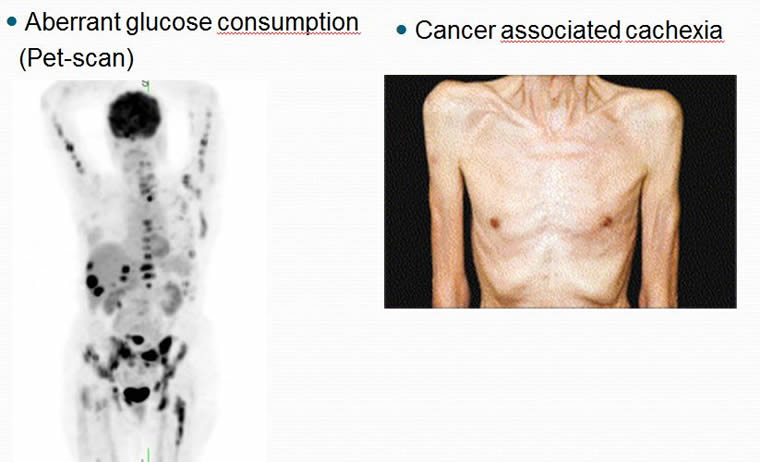
Cancer Metabolism: A Recurrent Approach
Preclinical evidences:
1925 - In most cancer cells: high aerobic glycolysis and lactic acid secretion. Warburg, Nobel Prize.
1997 - Oncogenes and tumor suppressor genes alter metabolic pathways. Shim H. PNAS.
2002 - Mutated forms of metabolic enzymes could promote cancer. Tomlinson I. Nat. Genet.
2009 - Cell chronic exposure to insulin and glucose favors transformation. Schwartz & Demidem, AACR.
Clinical evidences:
2009 - Metformin long term treatment of diabetes reduced cancer incidence. Libby G. Diabetes Care.
2010 - Obesity is the second risk factor for cancer. Khan N. Cancer Lett.
2010 - Use of an indirect PDH activator: regression of glioblastoma in 3/5 patients. Michelakis E. Sci Transl Med.
Chemotherapy alters cell methylation
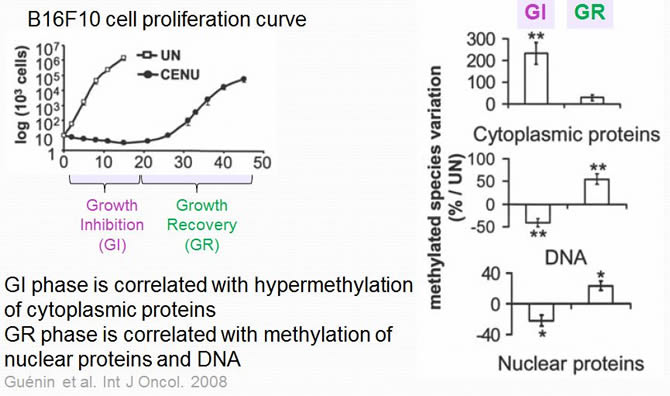
Cancer is a metabolic disease
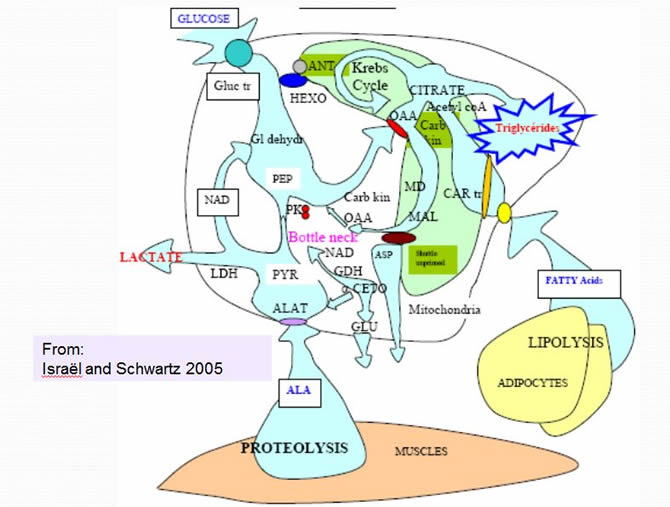
Metabolic Pathways Activated in Cancer
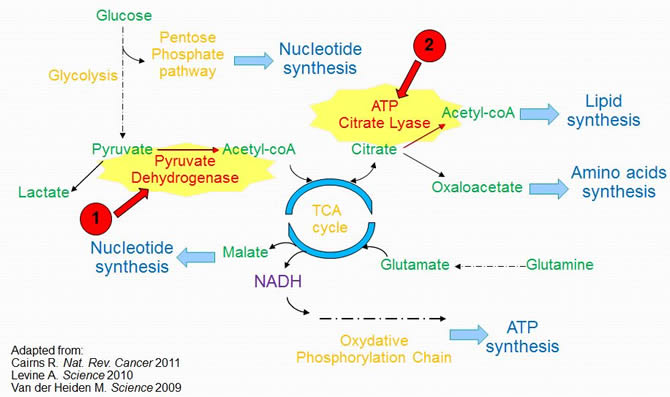
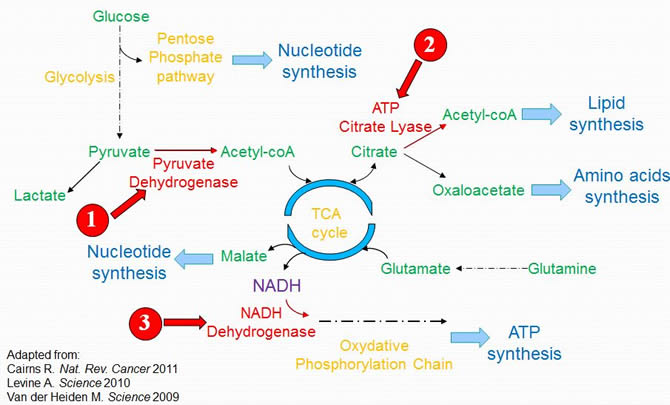
Links between oncogenes and metabolism
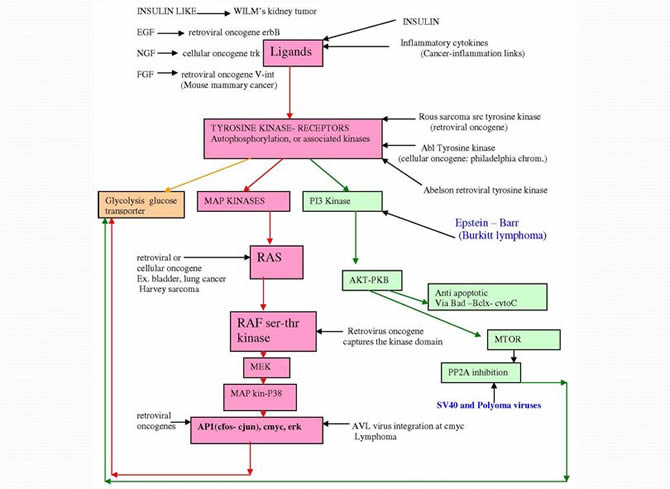
Around one hundred identified targets
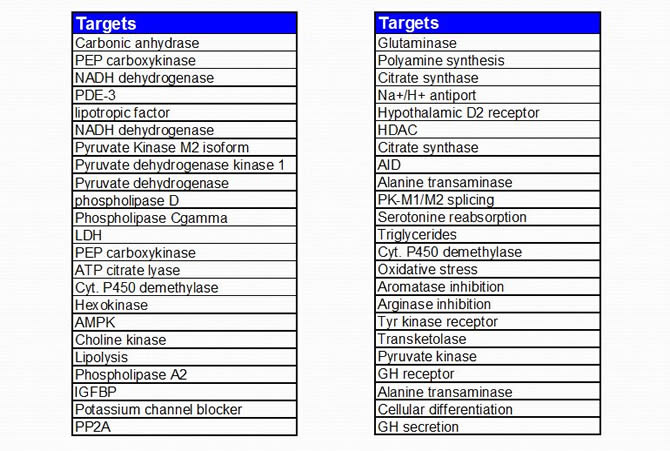
Selected drugs for in vivo screening
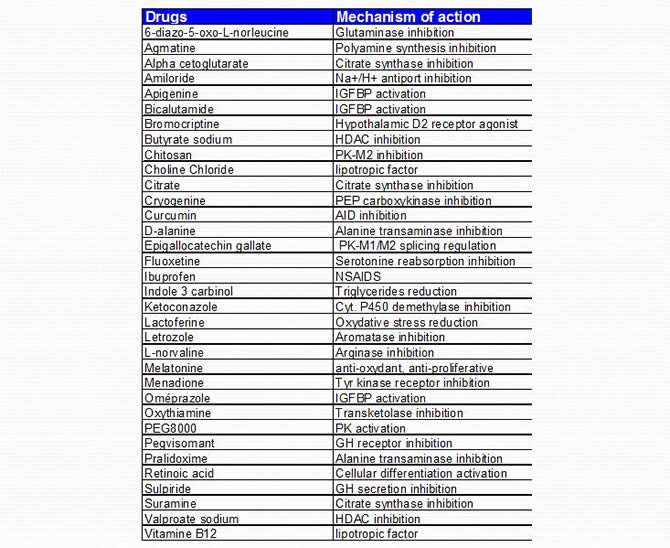
Selection Process
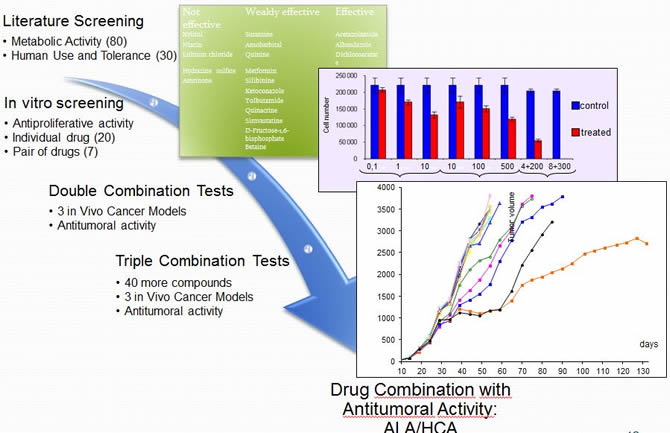
In vivo drug combination tests
Subcutaneous inoculation of tumor cells (~3000 mice)
3 syngeneic models:
Lung carcinoma (LLC),
Bladder carcinoma (MBT-2),
Melanoma (B16-F10)
Treatment via intraperitoneal administration of the drugs.
Tumor development follow-up:
Tumor volume (caliber, twice a week)
Animal weight
Survival
ALA/ HCA Efficacy
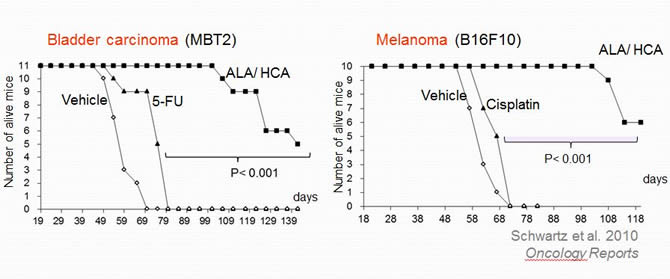
The ALA/ HCA combination doubles survival as compared to untreated mice.
ALA/ HCA combined with chemotherapy
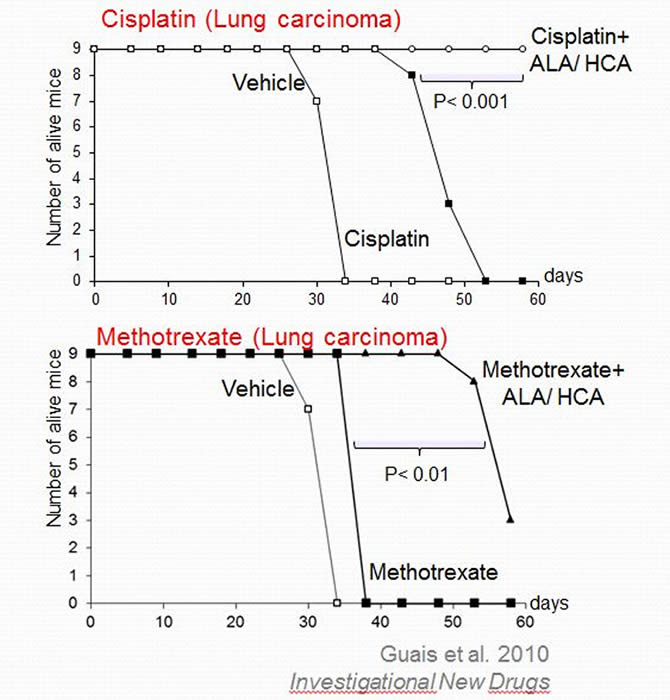
Addition of ALA/ HCA to chemotherapy significantly enhances survival.
ALA/HCA Efficacy
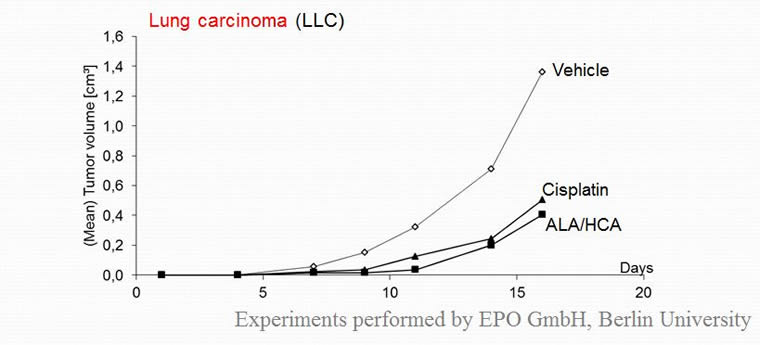
The combination significantly reduces tumor development (equivalent to cisplatin chemotherapy).
Animal models main results
Combination : Alpha lipoic acid + Hydroxycitrate
Results : Slows down tumor development, extends survival
Efficiency : Similar to chemotherapy, Potentiates CHT effectiveness
Models : Syngeneic mouse models: melanoma, bladder and lung carcinoma mice cells
Our previous publications
Tend to demonstrate that lipoïc acid (ALA) and hydroxycitrate (HCA) combination decreases.
The tumor growth in mice with either lung cancer, bladder cancer or melanoma.
Lipoic acid
ALA, well known treatment of the diabetic neuropathy its interest in cancer is growing
ALA is a cofactor in mitochondrial energy metabolism and a potent regulator of the cell's redox status with effects on P13K and AMPK signaling and related transcriptional pathways.
These mechanisms increase its interest in cancer and aging relative diseases.
Alpha-Lipoic acid (LA; 5-(1,2-dithiolan-3-yl) pentanoic acid) was originally isolated from bovine liver by Reed in 1951.
LA was once considered a vitamin. Subsequently, it was found that LA is not a vitamin and is synthesized by plants and animals.
LA functions as a cofactor for mitochondrial enzymes by catalyzing the oxidative decarboxylation of pyruvate, alpha-ketoglutarate and branched-chain alpha-keto acids.
Dihydrolipoic acid (DHLA) is the reduced form of LA.
Alpha-Lipoic acid (LA; 5-(1,2-dithiolan-3-yl) pentanoic acid and its reduced form dihydrolipoic acid (DHLA)
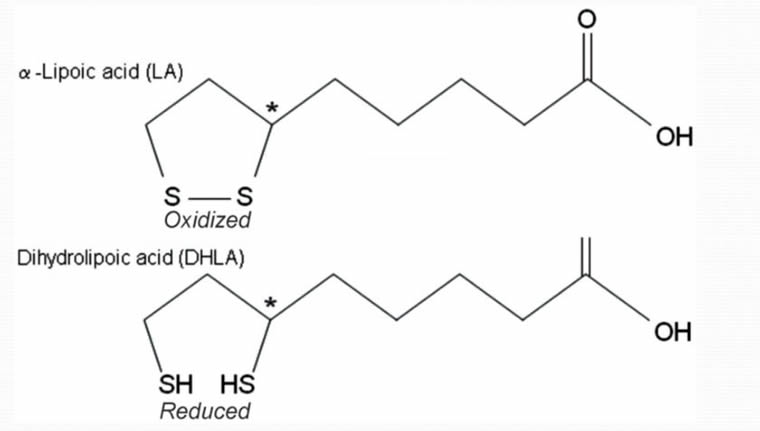
Alpha lipoic acid (ALA)
Mechanism of action :
-Anticancer activity via its activation of Pyruvate dehydrogenase (PDH)
-Other know activities: antioxidant and cofactor of several enzymes (Biewenga 1997)
Actual approved treatment for :
- Diabetic neuropathy and neurodegeneration (Thioctacid, MEDA Pharma in Germany),
- Dietary supplement in many countries (EU, USA, ...)
Anticancer activity:
- In vitro in the µM range (apoptosis induction, about 100 publications from end of 1990s and 2000s and Biorébus data)
- Low tumor inhibition in mice (20mg/kg/day) (Biorébus, no other publication)
In human, few articles:
- Reduction of oxidative stress caused by anticancer agents
(Mantovani G. Onc. Rep. 2002, Nutrition 2008)
- ALA and Low-dose Naltrexone prolonged the survival of three cancer patients (pancreas); one case: > 78months (Berkson B. 2006, 2009)
Very Good Tolerance (Cremer D. 2006) :
- No Secondary Effects at 1200mg/day during 2 years
- No Mutagenic or Genotoxic Activity
- Bioavailability: after 600mg oral dose of Na-RALA, Cmax = 70µM (Carlson D. 2007)
Therapeutic action of LA and DHLA
Their therapeutic action is based on their antioxidant properties: they meet all the criteria for an ideal antioxidant because they can easily quench radicals, can chelate metals, have an amphiphilic character.
They interact with other antioxidants and can regenerate them. For this reason, LA is called an antioxidant of antioxidants.
Current studies support the use of LA in the ancillary treatment of many diseases, such as diabetes, cardiovascular, neurodegenerative, autoimmune diseases, cancer and AIDS. LA and DHLA do not exhibit any serious side effects.
Hydroxycitrate (HCA)
Mechanism of action: ATP Citrate Lyase Inhibitor (only identified target) (Lowenstein 1969)
Extracted from Garcinia cambodgia fruit rinds, an indian traditional condiment
Indication: nutritional supplement for weight loss (for instance Slimax Solgar)
Anticancer Activity:
- In vitro about 100µM (2 publications and Biorébus data) (Board 1996, Beckner 2010)
- Moderate tumor inhibition in mice (500mg/kg/day) (Biorébus, no other publication)
- In human, no known anticancer application of HCA (few articles for whole garcinia extracts)
Very Good Tolerance (Soni MG 2004):
- No Secondary Effects at 5g/day during 8 weeks
- No Mutagenic or Genotoxic Activity
Bioavailability: after 2g oral dose of Ca/K HCA, Cmax = 16µM (Loe Y. 2001)
Potential role of hydroxycitrate ?
This could also be a way to inhibit tumor cells growth as other evoked mechanisms :
- increase of serotonin in the brain.
- inhibition of pancreatic alpha amylase and intestinal alpha glucosidase.
- leading to a reduction in carbohydrate metabolism.
Lipoic acid and hydroxycitrate
both molecules target the abnormal metabolic pathways such as seen in cancer
There combination appears in mice to be more effective than their use alone
We report here the early clinical tolerance evaluation of a daily metabolic combination in humans associated with chemotherapy.
Italian experience :
median duration of 14,5 months (4 to 20 m)
4 p. : 3 F, 1 M , median age 57 y( 37 - 81 y)
1 breast cancer
1 nasopharyngeal carcinoma
1 pancreatic adenocarcinoma
1 glioblastoma.
Doses : ALA 1,2 g/d HCA 1,2 g/d orally
All but one p. had concomitant chemotherapy
French experience :
Jan 08 to Nov 11
13 p. with local relapse and/or metastatic cancer with a combination of ALA -HCA
7 M, 6 F, median age 45 y (28 -74 )
2 colon, 1 lung , 1 hepatocarcinoma, 5 sarcomas, 1 neuro-endocrine
HCA administered orally , 3 g / d (1 g x3/d) from Oct 11 increased to 6 g /d for 3 last 6 p.
ALA 1,8 g /d ( 600 m g x3/d)
Median duration : 3 months (15 d - 5 m, 1 p. 20 m)
Results:
This association was well tolerated with few clinical disturbances :
- vomiting , nausea
- 5 patients had a gastric protective treatment
- 2 because of corticotherapy
- The increased dose of ALA was well tolerated
- No hepatic toxicity found
- no weight loss ,no hypoglycemia
Inconveniences :
Bad and discontinued observance for patients in relation with the cost of these medicines.
The difficulty to buy them (only by online pharmacy for ALA in France)
The tolerance of HCA was mild because of gastric pain but patients continue the treatment.
Availability of the drugs :
Alpha-lipoic acid : 13 companies having marketing authorization for iv formulation against diabetic neuropathy in Germany.
(Wörwag Pharma, Stadapharm, AAA-Pharma, MIP Pharma, CNP Pharma, Berlin-Chemie, Biomo Pharma, Esparma, Ratiopharm, Mit Gesundheit, Hexal AG, MEDA Pharma, Trommsdorff).
Hydroxycitrate : Garcinia cambodgie extract freely available :
In France, as a food supplement: Slimax® from Solgar (Pharmacy and health food stores)
In USA, as a food supplement and diet beverage ingredient: Super Citrimax® from Interhealth
Conclusion:
Combination of safe drugs may be able to:
- Reduce tumor development rate
- Enhance survival
- Improve chemotherapy efficacy
ALA / HCA : a new adjuvant to chemotherapy ?
ALA - HCA combination well tolerated promising treatment in cancer patients.
The switch to IV ALA would permit to obtain higher blood peaks and better observance
Nevertheless we don't know which dosage would be the best for patients
Randomized clinical trials are necessary to evaluate the efficacy on tumor progression in correlation with pharmacologic studies.


